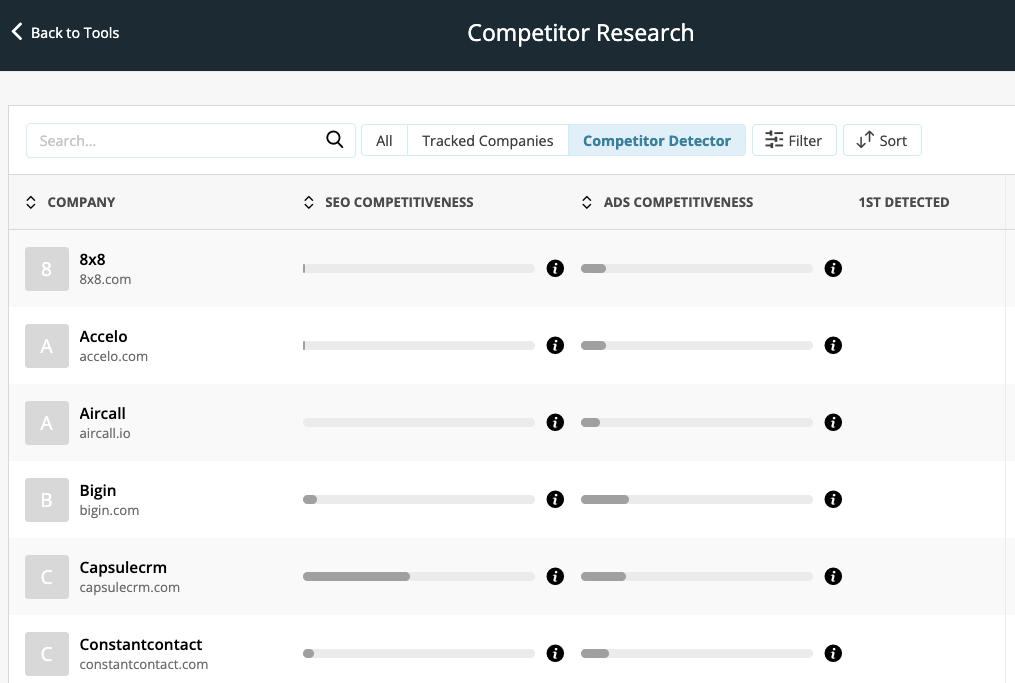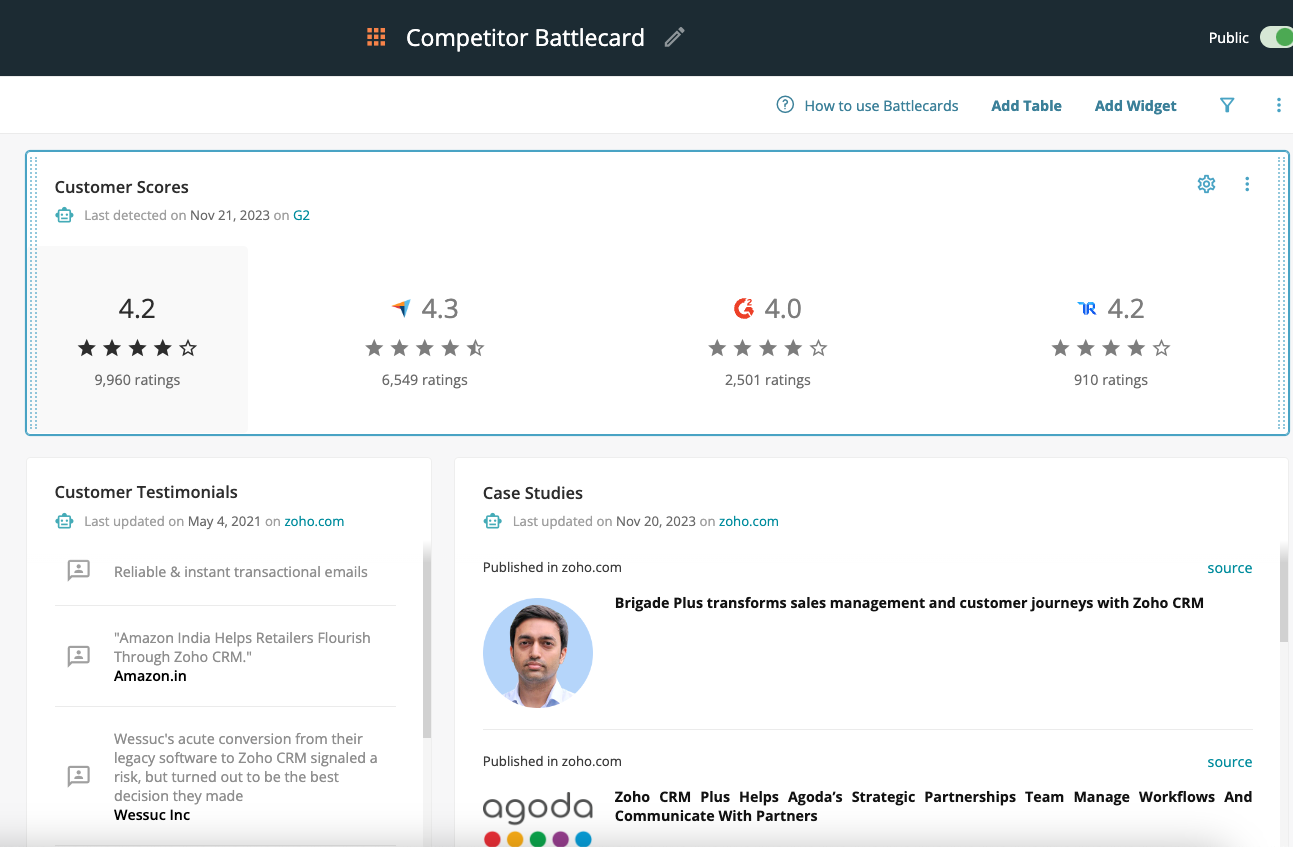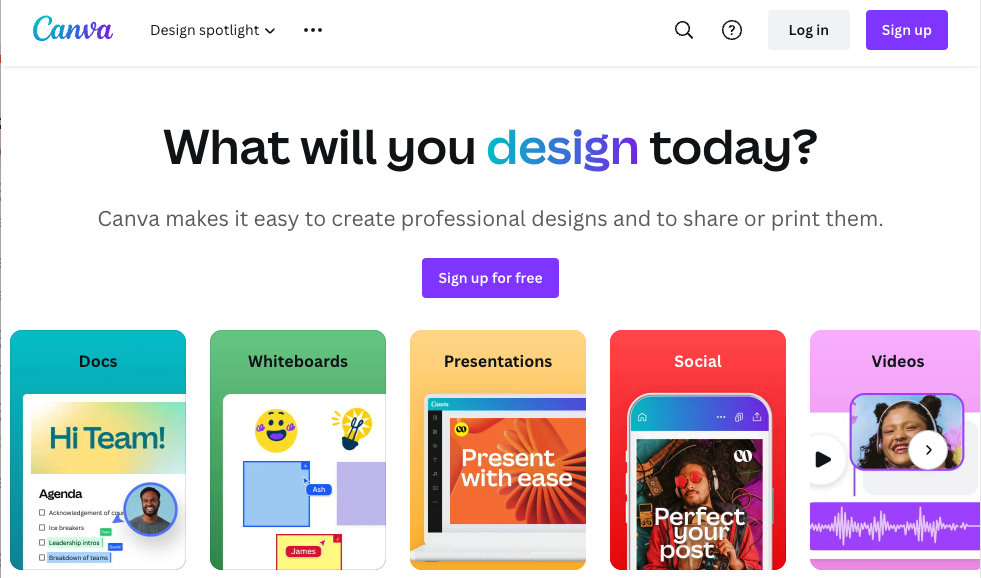Launching a Go-to-Market Strategy: Common Questions Answered
If you could use some help understanding what a GTM strategy is yourself, or explaining it to a colleague that still has questions, our guide to...
Discover the power of a strong GTM Strategy Framework and transform your product launches with key components, benefits, and every step to creating a successful GTM plan.

You know that feeling you get when your product launch and promotion goes off without a hitch?
The sales team confidently champing at the bit, marketing has its finger hovering just over the campaign "go" button, customer success is happily queuing up calls with excited users, and the product team high fives you in the hall?
No? If your last launch was more fire drill than masterpiece of coordination, you’re probably due for a new go-to-market (GTM) strategy framework. One that will help you feel in control and organized, allowing you to sleep at night (even the night before launch!), knowing that all the pieces are in place, everyone is informed, on the same page, and ready to sell the moment that new product drops.
All that stands between you and GTM utopia is a strong GTM strategy framework. And here’s one you’ll refer to time and time again.
So, what IS a Go-To-Market (GTM) Strategy Framework? Simply put, it's your strategic action plan for how you will sell to customers. But it's much more than just a simple outline—it's a roadmap for your product's journey from conception to the customer's hands, connecting the dots for every team in your company, uniting everyone in working toward your shared goal.
A go-to-market (GTM) strategy is a plan that helps businesses position a new product or service for launch, define their ideal customers, and coordinate messaging.
- Ilse Van Rensburg, Cognism
This strategy framework encompasses several strategies that define your ideal customers, determine how to reach them, and develop the compelling messaging you'll use to persuade them to choose your product or service over potential competitors. It's the missing link that connects the "what" of your product to the "why" of your customer's needs. And it's here to help you avoid those last-minute "oh no!" moments we know all too well.
Creating and executing upon the GTM strategy framework often falls to Product Marketing, though in smaller companies, this can be a joint effort between the CEO, CMO, and other company leaders.
That’s not to say though, that any one person will do this in a vacuum. It’s too much work for one person, and it requires the input of people from every department to get it right. There’s too much riding on this for you to go it alone! But someone should own the process. And if you’re a Product Marketing Manager, that someone is probably you.
More often than not, product marketers own the go-to-market process, since it depends heavily on cross-functional management, extensive knowledge of the product, and analysis of the market.
A GTM strategy and framework serve as the backbone of your organization's external-facing strategy. Rather than operating on a hunch (or 100 people operating on 100 hunches), your GTM strategy gives your entire company clarity and direction.
For example, imagine your company just launched a revolutionary new app designed to optimize sleep patterns using AI algorithms. Exciting, right? But if you don't thoroughly communicate who the product is for, how it benefits users, and what sets it apart from competitors in the market, you could end up with a big old snooze fest (pun intended).
Your marketing team, lacking solid information, might draft a social media ad campaign aimed at young adults who are all about tech trends. Your sales team, making their own assumptions, could be pitching it to senior citizens struggling with insomnia. This disjointed approach not only confuses the audience but also dilutes your brand image.
As a result, your customer support team may receive inquiries or requests from a wide, and not necessarily appropriate, demographic. They might struggle to handle customer queries and complaints due to a lack of clear understanding of the product and its benefits themselves.
With everyone improvising, there's no unified approach; your valuable resources are spent targeting wrong audiences and the actual potential users fall through the cracks.
Contrast this with an organization using a GTM strategy framework:
The difference is clear - with a strong GTM strategy framework, everyone knows the plan of action and can move in the same direction to push your product to success.
You can have an amazing product that is technically superior but without having the right access to the market you will lose. The sad story is that a large company with a better distribution system launches something far inferior and wins. That is why a killer Go-to-market always wins over a great product.
While GTM strategies are most often associated with launching new products (or even a whole new company), they can also be useful when you’re targeting a new audience for a product, changing the company’s overall positioning, or preparing for the release of a new version of a product.
You may want to have different frameworks and specific tasks for smaller or larger product changes and launches, but the main components remain the same.
GTM strategy often plays a key role in preparing for a product launch, but they’re not the same.
A Go-to-Market (GTM) Strategy can be compared to getting ready for an epic hiking adventure. It outlines who you're traveling with (your target market), why you're traveling (your value proposition), and how you'll get there (the sales and marketing strategies).
The product launch, however, is like the day you put on your boots, strap on your backpack, and head off to the trail. It's a singular event that happens after you've planned the route by creating a GTM strategy. It’s the one-time event that launches your product to the public, but it never would have happened without all your planning and packing beforehand.

GTM strategy starts long before a product launch date and continues months (or even years) after the product is on the market.
Now it’s time to get into the actual work. Each heading and subheading below should become part of a GTM checklist or spreadsheet. Don’t skip a step!
Start with market research to understand the industry you’ll be stepping into. How big is it in terms of annual spending? How crowded is the market now, and is there room for growth? What are some of the main trends and market updates people are talking about?
One great way to do market research is with Semrush’s Market Explorer. If you already know who your competitors are, you can create a list, you can find competitors by entering your domain, or analyze an entire category. We’re going to stick with our sleep app example and since our domain doesn’t yet exist, and it’s a niche category, we’ll go with someone we view as a direct competitor, so we can see what the market looks like.

.png?width=2486&height=796&name=Market%20Summary%20(Oct%202023%2c%20WORLDWIDE%2c%20calm.com).png)
.png?width=2486&height=1148&name=Growth%20Quadrant%20(Oct%202023%2c%20WORLDWIDE%2c%20calm.com).png) From here we can see that the market is moderately consolidated between 88 domains, and while the total addressable market is 7 billion, the addressable market is a more modest 108.7M . I can also see key players, and their growth trajectories, allowing me to identify who to watch out for.
From here we can see that the market is moderately consolidated between 88 domains, and while the total addressable market is 7 billion, the addressable market is a more modest 108.7M . I can also see key players, and their growth trajectories, allowing me to identify who to watch out for.
Now I can start to consider if I want to enter this existing market, if there’s room for me, and if my product is sufficiently differentiated to make inroads.
The rest of that page gives me loads more information about my competitor, including top keywords, traffic trends and sources, audience demographics and more. Dig deeper on the “Audience” and “Benchmarking” tabs.
Kompyte also offers a Competitor Detector that can help you spot companies ranking for or bidding on your keywords.
Audience research. Now that you have the big picture of the market, it’s time to get personal and understand who your product is for. What does their typical day look like? What are their main problems and needs? What are their top priorities? What are they using now? Answering those questions requires doing thorough audience research. And ideally you do this before, during, and after you create your product.
You can hire a research company to do this for you, sponsor a survey, interview existing customers, create an advisory board, or all of the above!.jpeg?width=2304&height=1792&name=Firefly%20Please%20create%20a%20landscape%20image%2c%20a%20colorful%20illustration%20for%20this%20concept-%20one%20person%20gettin%20(1).jpeg)
Segment and create buyer personas. Now that you know who your customers are, document your findings to share with the entire team. A detailed buyer persona is a good place to start. Make sure to include the unique pain points you solve for each and how you solve them.
Incorporate your market research findings by including segment size, estimated value, and anything else that will help your sales and marketing teams understand your buyer. Most companies will have more than one segment and persona.
Now it’s time to figure out why your customers would choose your product.
Conduct competitive research – From our own research, we’ve learned that 57% of deals are competitive; so you can assume your customers will research multiple products when making a decision.
To make sure yours stands out from the pack, you need to learn what your competitors offer, the messaging they use, and how they reach their audience. You’ll also want to keep a close eye on important website changes, new ads, keyword strategy, and customer reviews.
Kompyte was built for that. It also serves as a curation and distribution platform, making it easy for your whole team to keep up to date with important competitor insights. 
Consider using Battlecards as a quick snapshot which would include sections such as “why we win,” “why we lose,” and “overcoming objections”. These will be useful to sales and marketing teams and you’ll figure out what belongs here in future steps.
The outcome of this step is a brief statement that can help your entire team understand what you’re making, for whom, and why. It’s an internal statement only, and will be used to create external messaging later. It might look something like this:
For [target buyers], [your offering] is a [market category] which provides [main benefits], unlike [primary competitor] which provides [competitors’ benefits].
Refine your main differentiating benefits by asking yourself the following questions:
Now craft your own statement. Go back to your personas and add in the compelling reasons this persona would choose your product.
Messaging is an extension of your positioning. While this step is a lot of work, over time you’ll find it saves time and enables your company to remain consistent in external messaging. From paid ads to product tie ins on the blog, all of your marketing becomes more effective when everyone is on the same page. Include the following.
Your Audience. Add a very brief background of the persona you’re targeting. You may have more than one messaging document for each product - one for each persona.
Your Value Proposition. In 10-15 words, what is your value? It should be closely tied with your positioning. Here’s an example from Canva:

You can imagine their positioning statement might look something like this:
For small-business marketers, Canva is a DIY design platform which provides an easy way for anyone to create professional images, videos, and presentations, unlike Photoshop and Illustrator, which provide powerful image editing for professional designers.
Note: I have no insight into Canva’s actual positioning statement.
Write a simple elevator pitch. Incorporating our value proposition above, add in some emotion for a 1-2 sentence overview of your product. Here’s an example:
Unleashing the creative genius in small-business marketers—Canva is your accessible ally to create stunning images, videos, and presentations minus the complexities of more technical design tools. Discover how our user-friendly DIY platform doesn't just make design effortless, but a delight.
Expand on your pitch. Include your value points from the positioning work you did, as well as product details, benefits, your target audience, and some kind of social proof (big-name customers, awards, reviews, etc.). Focus on what you want them to remember and what you want them to feel. For Canva, we might include sections including phrases such as:
Define tone of voice. How will you talk to your audience? Are you formal or informal? Conversational or matter of fact? Witty or all business? Learning about your audience from the sites they visit and the social accounts they follow can help you figure out which they prefer.
Outcomes. What can customers do only because of your product? Find out from your customers what they think these are and the order of importance for these outcomes.
Examples could include:
Customer requirements. What is it that your customers MUST have if they’re to choose your product? Add these to ensure they’re mentioned in sales conversations and marketing copy.
Examples could include:
Pain points solved. What are the problems you’re solving and how do specific features solve them? For example, maybe your new AI writing tool solves the problem of not knowing what copy to include on an image used for advertising. Make sure to include which features solve that problem and how this makes you different from the competition.
Back it up with evidence. Provide a brief case study, quote, or success story to prove the pain point solution you outlined above. If you have a library of reviews or customer quotes to support these claims, link to those to ensure marketing shares a variety of examples.
Knowing what people currently pay for similar products and deciding what kind of pricing model to use is step one. From there you can define your pricing and tiers or options, if needed. You may wish to survey current or prospective users to determine their willingness to pay.
This is quite a process as well, but after all that hard work, make sure the team, especially the sales team, understands it and can explain pricing options and communicate value to prospective customers.
Where does your buyer start, and what steps have they taken by the time they purchase from you? It may be simple and completed in hours or days if the benefit and product are obvious and users can sign up for a free trial. Or it may be complex, spanning weeks or months.
Understanding this journey is key to enabling sales and marketing teams to support people throughout the entire process and to plan the content that will be needed for your new product or feature.
Broadly speaking, buyers may take this path:
Your involvement here will be mainly to set the direction and provide the messaging to fuel the efforts of the marketing team. Get them involved early and often to hammer out the channels you’ll use, how to apply your messaging to each, and how you’ll reach different audiences at every stage of the journey.
Continue to work together to test and refine your messaging over time. Regularly meet with stakeholders to update them on progress, important dates, and any new findings. Make sure their deliverables match the agreed-upon timeline, too.
How will you sell this product? Will there be a self sign up with a free trial? Will you work with a sales team who will conduct product demonstrations and follow up on interest? Will you do any outbound sales and marketing?
If you already have a sales team, you’ll want to plan training sessions, update collateral like sales decks and Battlecards, and listen in on sales calls to make sure they’re confident and using the agreed-upon messaging.
Keep communication open with the sales team, making sure they have what they need to be successful.
If you have trouble getting sales teams to attend training sessions or use your materials, find out why. Do they not believe it will help? Is what you’re doing really not working? Are they just too busy (which, frankly, really means they don’t think it’s worth their time)?

Give them a reason to believe, incorporate their feedback, issue a challenge and offer incentives for participating, and help them see the impact on their sales success.
Your customer success teams are often (along with sales), your best source for frontline intel on your users. Since they’re the ones who will get questions about your product and how to use it, make sure they have the answers!
Of course, you can’t predict every issue or question that will come up, so make sure you keep communication open with them. Fortunately, customer success professionals are expert communicators and are often eager to partner with you.
What will you learn from customer success? Get FAQs that could be answered in public content and during the sales process, recurring complaints that could indicate the need for a new feature or a fix of an existing issue, and dissatisfied customers who shouldn’t have purchased in the first place (which means your positioning and messaging could use clarification).
If you know that product is releasing a feature that has been heavily requested, or solves a big market pain point - make your customer success team the hero. Let them share the message with those customers, delivering on your promise of being pain killer to the customers' area of need. Amanda Groves, Senior Director Product Marketing, Crossbeam
Make sure you have a document you can refer to to keep track of what tasks are next, in progress, completed, or blocked. Assign owners and helpers for each task or section of tasks, along with clear due dates.

Link every important document so you can access everything from this one place.
Remember, you’re not doing this alone, so regularly communicate with sales, marketing, and customer success. You can share this document with them, but they’re not likely to do more than have a quick look. Once. If you’re lucky.
Instead, have regular meetings with each team, sharing only what the members of that team need to know and do. Ideally, hop into one of their already-established team meetings and take as little time as possible to update them on timelines, check if they’re on track to deliver their tasks, share any new findings, and answer any questions they may have.
No two products are the same, and no two launches are the same, but starting with a solid framework is the best way to ensure everything goes off without a hitch.
Create your own GTM task list using our framework and see how it changes everything. Happy launching!
If you could use some help understanding what a GTM strategy is yourself, or explaining it to a colleague that still has questions, our guide to...
Consistency is the key to successful GTM strategies. Learn the keys to achieving consistency across your organization.
Many people use the terms “go-to-market (GTM) strategy” and “product launch” interchangeably. But that reveals a misunderstanding of what each term...
Be the first to know about new B2B SaaS Marketing insights to build or refine your marketing function with the tools and knowledge of today’s industry.